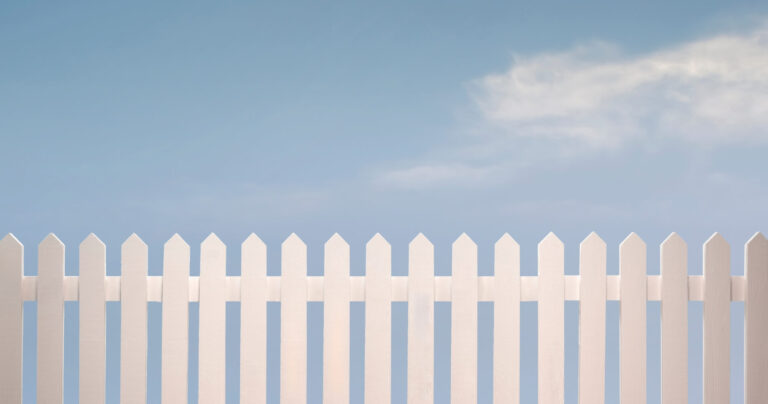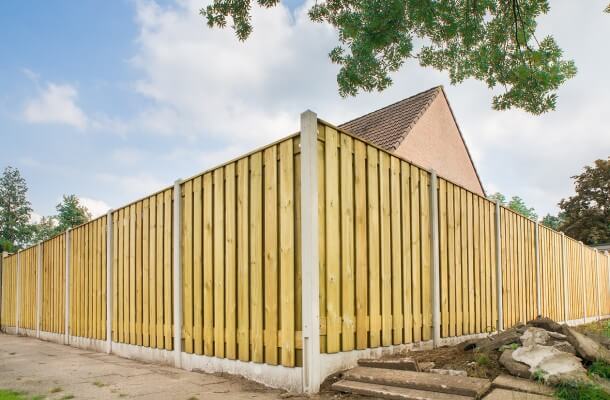Installing a new fence can greatly enhance the look of your yard and also provide security and privacy. When it comes to choosing a fencing material, vinyl and wood are two of the most popular options. Both have their pros and cons. Let’s compare vinyl and wood fencing to help you determine which is better for your needs.
Durability
One of the biggest considerations when choosing a fencing material is durability. You want your fence to last for many years without requiring frequent repairs or replacement.
Vinyl fencing is highly durable and requires little maintenance. The PVC vinyl resists rot, decay, and insect damage. It won’t warp or crack from sun exposure. Vinyl fences can last 20-30 years or longer.
Wood fences have the potential to last as long or longer than vinyl but require more maintenance. Cedar and redwood are naturally resistant to rot and insect damage. But any wood fence will need occasional sealing or stain to protect it from the elements. Without proper care, a wood fence may start to weather, crack, or warp after 7-10 years.
Appearance
Another factor is the aesthetic appeal of the fence style you choose. There are pros and cons to vinyl and wood’s appearance.
Vinyl fencing offers a wide variety of styles that mimic classic wood fences. Vinyl fences maintain a like-new appearance for years since the color is imbedded throughout the material. One downside is that lower-quality vinyl can sometimes look obviously artificial.
Wood fences provide a timeless, elegant look. Cedar and redwood have a rich, natural grain that adds warmth and texture. Wood can be painted or stained different colors. But without regular upkeep, wood fences will start to show signs of weathering over the years.

Privacy
If you’re installing a fence for privacy, both vinyl and wood provide an opaque barrier.
Vinyl fences often have completely closed off pickets to prevent visibility and noise. The panels are solid and won’t warp or bend over time.
Wood fences typically have gaps between the pickets unless installed with a tighter layout. But even with gaps, most wood fences still provide sufficient privacy as long as you choose an adequate height. The solid posts and rails prevent visibility through the fence line.
Costs
Vinyl and wood fencing have significantly different upfront and long-term costs.
Vinyl fencing is generally 2-3 times more expensive than wood for the initial installation. A basic 6-foot privacy vinyl fence costs $15-20 per linear foot installed. The higher cost is due to the PVC plastic production.
Wood fencing has a lower upfront cost. A simple cedar wood privacy fence starts around $8-12 per linear foot installed. The wood material itself is inexpensive.
But when you factor in long-term maintenance costs, wood fences end up being more expensive in the long run. Vinyl’s durability means little ongoing cost, while wood requires periodic staining, sealing, or repair work.
Customization
Both vinyl and wood fencing can be customized, but wood offers more flexibility.
Vinyl fences are available in different heights, lengths, styles, and colors. But you are limited to standard sizes and configurations offered by the manufacturer. There is little ability to modify or add custom decorative details.
Wood fences can be designed and built completely from scratch based on your exact specifications. The fence contractor can include custom accents, lighting, gates, planter boxes, or anything else you want. Wood’s workability lends itself to unlimited customization potential.
Environmental Impact
Homeowners are increasingly considering the environmental impact of their home improvement choices. Vinyl and wood fences differ quite a bit in this regard.
Vinyl is an entirely synthetic material made from PVC. While vinyl fences are recyclable, most end up in landfills. Vinyl production and disposal contribute to pollution and use up non-renewable resources.
Wood is a renewable, biodegradable resource. Sustainably-harvested wood comes from forests that are repeatedly replenished. And untreated wood can safely decompose at the end of its lifespan. Using wood promotes environmental stewardship.
The Verdict
So which should you choose – vinyl or wood? Here are some quick recommendations:
- Vinyl is better if you prioritize low maintenance. Its longevity and durability mean your fence will hold up for decades without much upkeep.
- Wood is a better choice if you want a classic, customized look. Wood offers inherent beauty and warmth that vinyl can’t match.
- Vinyl wins on privacy. Its completely opaque panels provide slightly better seclusion from sights and sounds.
- Wood is more eco-friendly. Using sustainably-sourced wood does less harm than vinyl production.
- Vinyl has a higher initial cost but may save money long-term. Wood is less expensive to install but requires periodic maintenance.
For even more guidance tailored to your situation, consult with Fencing El Cajon. Their expert fencing contractors can assess your specific needs, yard layout, and budget to help you decide between vinyl and wood. With over 30 years of fencing experience, they are familiar with the pros and cons of both materials.
Replacing or installing a fence is a significant investment. Consider all the factors – appearance, durability, cost, customization, and environmental impact – before choosing vinyl or wood. Selecting the best material for your home will ensure your new fence enhances your yard for years to come.



